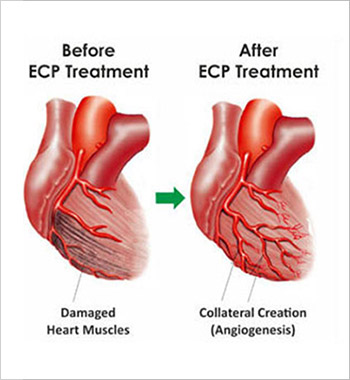Enhanced external counterpulsation (EECP) treatment is an FDA-approved outpatient therapy for chronic stable angina. It uses pressure on the lower limbs to improve blood flow in people with long-term symptoms of heart disease, such as chest pain and pressure.
EECP therapy uses pressure to improve your blood flow. It's a noninvasive, outpatient treatment. You typically receive the treatment over seven weeks.
This type of therapy can reduce your need for medication and increase your ability to be active without experiencing symptoms.
What is angina?
Angina is a sign of coronary heart disease that affects more than 10 million Americans. When you have angina, your heart doesn't receive enough oxygen-rich blood due to narrowed or blocked arteries. In chronic stable angina, symptoms such as chest pain or weakness come and go when you are active or under stress.
What conditions can EECP therapy treat?
-
Chest pain.
-
Cough.
-
Fatigue.
-
Shortness of breath (dyspnea).
EECP can also help other conditions, including:
-
Cardiac syndrome X (a type of angina).
-
Cerebrovascular disease.
-
Heart failure.
-
Kidney (renal) failure.
-
Left ventricular dysfunction (an early stage of heart failure).
-
Lung disease (pulmonary disease).
-
Peripheral artery (vascular) disease (PAD).
How does EECP therapy work?
EECP treatment applies pressure to blood vessels in your lower limbs. The pressure increases blood flow back to your heart, so your heart works better. When your heart pumps better, symptoms ease.
This type of therapy can also encourage blood vessels to open new pathways for blood to flow to your heart. These pathways eventually become ''natural bypass'' vessels that help relieve symptoms of angina if your coronary arteries are narrowed or blocked.
Who is eligible for EECP therapy?
You may be eligible for EECP therapy if you:
-
Have long-term chest pain or pressure that comes and goes during physical activity or stress.
-
No longer experience relief with medication.
-
Don’t qualify for an invasive procedure like surgery.
-
Experience renewed symptoms after an invasive procedure such as bypass surgery, angioplasty or stenting.


 Malaysia
Malaysia